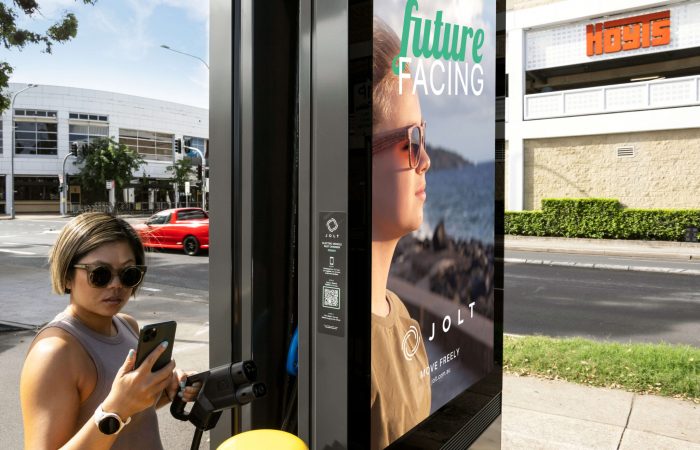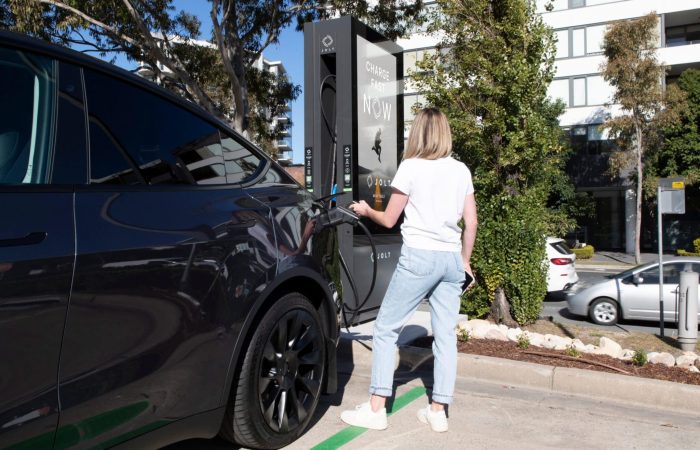What is Programmatic Out-of-home Advertising
Programmatic out-of-home advertising (PDOOH) is software that automates the process of planning, buying, targeting and measuring ad campaigns on digital screens. It uses machine learning and algorithms to help advertisers target a specific audience based on data touchpoints (e.g. first and third-party mobile data insights).
PDOOH reflects a trend away from the traditional labour-intensive ad buying process towards a more audience-centric model. No longer does the ad buying process have to involve proposals, tenders, quotes, negotiation or even human interaction. Programmatic out-of-home advertising streamlines the entire process and has the advantages of:
- Making advertisers more effective at targeting specific audiences; and
- Giving advertisers more control when optimizing and improving their campaigns.
As such, it is little wonder that programmatic out-of-home advertising has become one of the most popular digital marketing tools in the world. In 2020, advertisers around the globe spent an estimated $129 billion US dollars on programmatic digital ads. In 2021, that number is set to surpass $150 billion.
How Does Programmatic out-of-home Advertising Work?
The core purposes of programmatic digital out of home advertising (PDOOH) and traditional out of home advertising (OOH) are essentially the same – to deliver an ad to a digital screen in real-time. However, PDOOH and out-of-home differ immensely in two key areas:
- PDOOH streamlines the process of buying and selling digital ads; and
- PDOOH offers far greater capabilities in regards to planning, targeting, optimizing and measuring ad campaigns.
When an advertiser launches a PDOOH campaign, they set parameters (also known as triggers) for that campaign and determine a price that they are willing to pay for it. The creative will only be served on the screen once those set parameters have been triggered. Parameters that can be used to trigger a campaign might include:
- Specific locations or regions
- Audience demographic and behaviour
- Mobile device data
- Weather
- Time.
The datasets that power PDOOH campaigns are unlimited and come from a multitude of different sources. These datasets allow the software to predict which audiences are most relevant to a particular campaign. As such, advertisers can customize each campaign to target the specific needs of any given audience.
What’s more, programmatic out-of-home advertising makes it easier than ever for brands to measure the success of their campaign. Based on the advertiser’s key performance indicators, the system will monitor ad spend and suggest areas of improvement or optimization.
Essentially, programmatic out-of-home advertising helps advertisers to determine where their budget is best spent. It replaces the traditional hit-or-miss approach and helps to ensure that the right ad gets served to the right audience at the right time. Plus, PDOOH provides advertisers with the freedom to change and optimize their ads in real-time based on analytical feedback.
What Are the Benefits of Programmatic out-of-home Advertising?
According to the IAB Australia, almost 25% of agencies used PDOOH during 2020 and around 35% of agencies will increase their spending on programmatic out-of-home advertising in 2021. The Outdoor Media Association also reports that the majority share of outdoor media revenue for Q2 2021 ($203.3 million) came from programmatic out-of-home advertising.
The main reason that programmatic out-of-home advertising is becoming so popular is that it simplifies and streamlines the ad buying process whilst empowering advertisers to have more control over the planning, targeting, optimization and measurement of their campaigns.
Other benefits that advertisers can receive from programmatic out-of-home advertising include:
- The ability to connect directly with demand-side platforms and receive 24/7 support.
- Greater control over campaign parameters and improved accuracy when targeting specific audiences.
- The ability to change or optimize a campaign in real-time.
- Access to endless audience datasets which drive improved advertising results.
- The ability to measure the success of campaigns based on numerous metrics like in-store visits and brand awareness.
- The software is easy to use and accessible to everyone.
How to Start Programmatic out-of-home Advertising with JOLT
JOLT is removing the barriers to EV ownership in Australia by building a network of fast and free charging infrastructure. Brands can use our partner DSPs to run ad campaigns our URBAN PANEL network.
By advertising on JOLT’s fast chargers, not only are brands supporting EV drivers and building an environmentally-friendly brand perception, but they are also gaining the ability to target market their products and services toward a rapidly-growing segment of innovative and engaged socially conscious consumers.
JOLT’s H.E.L.I.O programmatic out-of-home advertising system utilizes mobile data insights from devices that are used to connect to our EV chargers. These first and third-party datasets provide advertisers with a simple demographic snapshot of audiences within our network. In turn, brands can improve audience reach, frequency, dwell time and visibility by quickly and easily placing their creative at optimum locations.
To learn more about how your brand can advertise to a growing audience of EV owners using JOLT’s programmatic advertising platform, please contact us today.



